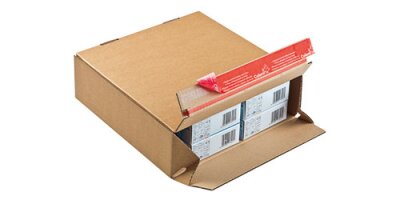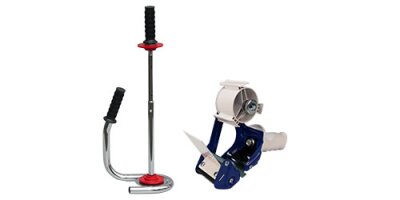The transport of dangerous goods is a complex and highly regulated task in logistics, presenting companies with numerous challenges. In a time when efficiency, safety, and environmental responsibility are becoming increasingly important, innovative solutions and best practices for dangerous goods shipping are more critical than ever. In this blog post, we will explore the ultimate guide to shipping dangerous goods in Europe, providing you with valuable tips and insights for successful and sustainable dangerous goods transport. Dive with us into the world of safe and efficient logistics!
The Importance of Dangerous Goods Shipping in Europe
Dangerous goods shipping is a highly regulated area in the logistics industry, especially in Europe. Companies that ship dangerous goods must strictly adhere to safety regulations to protect both employees and the environment. In Europe, there are clear legal requirements regarding the transport of dangerous goods, which are harmonized across Europe to ensure smooth cross-border transport.
Safety Regulations for Dangerous Goods Transport
-
Classification of dangerous goods according to international regulations
-
Labeling of packaging according to the regulations
-
Training employees in the safe handling of dangerous goods
Legal Requirements in the European Region
-
Compliance with ADR regulations (European Agreement concerning the International Carriage of Dangerous Goods by Road)
-
Registration and approval of dangerous goods shipments according to national regulations
-
Collaboration with certified dangerous goods carriers
For further insights into the specific regulations of each country, we recommend consulting the official guidelines of the European Chemicals Agency.
Preparation for Safe Dangerous Goods Transport
The safe transport of dangerous goods requires thorough preparation to minimize potential risks. It is crucial to correctly determine the class of dangerous goods and label the packaging accordingly to ensure safety during transport.
Determining the Dangerous Goods Class and Labeling
-
Identification of dangerous goods according to applicable regulations and guidelines
-
Classification into categories such as explosives, gases, flammable liquids, etc.
-
Correct labeling of packaging with dangerous goods symbols and warnings
Selection of Appropriate Packaging Materials
-
Use of certified dangerous goods packaging that meets the requirements of the respective class
-
Protection against damage and leakage during transport
-
Consideration of environmental aspects when choosing packaging materials
Documentation and Insurance
-
Preparation of all required freight and dangerous goods documentation according to the regulations
-
Obtaining transport insurance to cover potential damages
-
Review of insurance conditions related to dangerous goods transport
For detailed information on choosing suitable packaging materials and further recommendations, we suggest visiting the website of the well-known logistics company DHL.
Practical Tips for Smooth Dangerous Goods Shipping
Smooth dangerous goods shipping requires not only careful preparation but also adherence to best practices to avoid potential issues during transport. Here are some practical tips that can help you:
Proper Handling of Dangerous Goods Materials
-
Training employees in handling dangerous goods according to legal regulations
-
Ensuring that staff have the appropriate protective equipment
-
Monitoring the loading and securing of dangerous goods in the transport vehicle
Avoiding Delays and Problems During Transport
-
Adhering to schedules for the pickup and delivery of dangerous goods shipments
-
Communicating with carriers and recipients to ensure smooth transport
-
Making provisions for potential incidents or delays
Emergency Measures in Case of Accidents
-
Creating an emergency plan for dealing with dangerous goods accidents
-
Providing emergency contact information and first aid equipment
-
Training employees for emergencies and conducting regular emergency drills
For more information on emergency measures in dangerous goods shipping, we recommend visiting the website of the global logistics company UPS.
Sustainability in Dangerous Goods Shipping
Sustainability in dangerous goods shipping is becoming increasingly important as companies strive to take on environmental responsibility and implement more eco-friendly practices. Various measures can help reduce the ecological footprint of dangerous goods shipping and promote sustainability.
Eco-Friendly Packaging Alternatives
-
Use of recyclable or biodegradable packaging materials
-
Use of reusable packaging for dangerous goods transport
-
Considering environmental impact when choosing packaging solutions
Reducing the Ecological Footprint
-
Optimizing transport routes to minimize emissions
-
Using eco-friendly transport methods such as electric vehicles or alternative fuels
-
Implementing energy efficiency measures in logistics processes
Certifications and Compliance with Sustainability Standards
-
Obtaining environmental certifications and labels for sustainable dangerous goods shipping
-
Compliance with industry-specific sustainability standards and guidelines
-
Transparent communication of sustainability efforts to customers and partners
For more information on eco-friendly packaging alternatives in dangerous goods shipping, we recommend visiting the website of the logistics company DB Schenker.
Advancements and Trends in Dangerous Goods Shipping
The logistics industry is constantly evolving, and there are ongoing advancements and innovative trends in dangerous goods shipping that improve the efficiency and safety of transport. Companies that ship dangerous goods should stay informed about these developments to remain competitive and meet market demands.
Innovative Technologies for Safe and Efficient Transport
-
Use of track-and-trace systems for real-time tracking of dangerous goods shipments
-
Use of telematics solutions to monitor temperature, humidity, and vibrations
-
Implementation of AI-driven predictive algorithms for risk assessment and route optimization
Digitalization of Logistics Processes
-
Automation of warehousing and picking for faster handling of dangerous goods shipments
-
Electronic documentation to reduce paperwork and errors
-
Integration of online platforms for easy booking and tracking of shipments
Future Prospects for Dangerous Goods Shipping in Europe
-
Promotion of multimodality for more eco-friendly transport
-
Harmonization of laws and regulations across Europe for seamless cross-border deliveries
-
Focus on sustainability and green logistics solutions to reduce environmental impact
For insights into the latest technologies and trends in dangerous goods shipping, we recommend visiting the website of the logistics company Kuehne + Nagel.
Frequently Asked Questions about Dangerous Goods Shipping
What are the basic requirements for shipping dangerous goods?
To safely ship dangerous goods, companies must classify the goods according to international regulations, use appropriate packaging materials and labeling, and train employees accordingly.
What documentation is required for dangerous goods shipping?
Specific freight and dangerous goods documentation is required for dangerous goods shipping, containing all information about the goods being transported and safety instructions.
How can safety be ensured during the transport of dangerous goods?
Safety during the transport of dangerous goods can be ensured by proper packaging and labeling,by proper packaging and labeling, training personnel, regularly inspecting transport vehicles, and adhering to legal regulations.
What role does sustainability play in dangerous goods shipping?
Sustainability is becoming increasingly important in dangerous goods shipping as companies focus more on eco-friendly packaging alternatives, reducing their ecological footprint, and complying with sustainability standards.
What trends are shaping the future of dangerous goods shipping in Europe?
Future trends in dangerous goods shipping include the use of innovative technologies for safer transport, the digitalization of logistics processes, and a stronger focus on eco-friendly and sustainable logistics solutions.








































































































